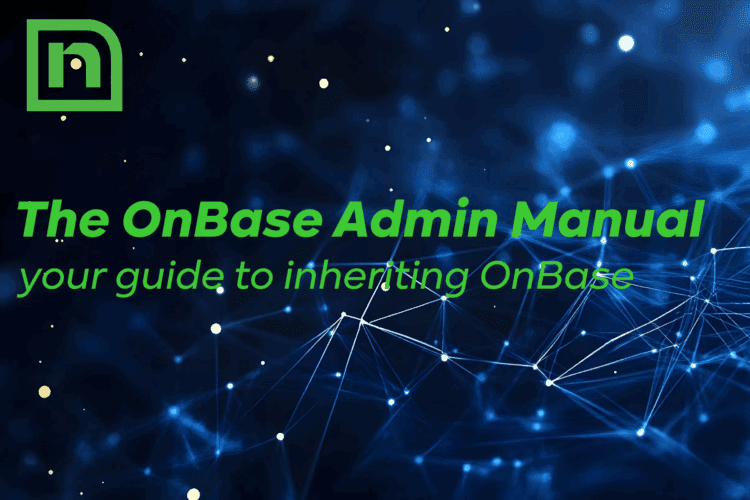Looking to expand your enterprise content management (ECM) platform so it can solve today’s problems?
You’re not alone.
For many organizations, ECM platforms started as digital filing cabinets. They were places to store documents, contracts, and records, and embracing them brought massive gains in efficiency, savings, compliance, and more.
But today, the list of use cases for these platforms has expanded exponentially, offering new ways to improve your work life and help you get more out of your investment. So, pursuing ECM modernization is a natural next step.
ECM modernization is the process of upgrading an organization’s existing ECM platform to access emerging technologies and capabilities, unlocking many new use cases that solve today’s business challenges.
That could mean a lot of things, with some examples including embracing:
- Workflow automation
- System version upgrades
- System consolidation
- Integration with other systems, including AI-driven technologies
- A more seamless user experience, including better collaboration
- Cloud migration
At the recent Nashville stop on Naviant’s Intelligent Automation Day conference series, we got the chance to catch up with a panel of local Naviant customers and hear about the ways they’re using their ECM platforms to solve today’s most pressing operational challenges.
Below, we’ve compiled three of those customers’ stories that we think may resonate with you and hopefully inspire you to solve your own unique challenges.
How IT Leaders Are Pushing the Boundaries of ECM to Solve Today’s Challenges
1. Reimagining Broken Manual Processes with Automation to Reduce Costs and Boost Visibility
Our first panelist, a Corporate Controller at a global workwear manufacturer, described how his team is using their content platform to overhaul a formerly fragmented procure-to-pay process.
Previously, his team’s invoice process involved processing over 6,000 invoices per month. Handling this volume was challenging too, given the process’s manual, inconsistent nature, and required the work of 30 employees plus a third-party vendor.
“We were spending a lot of money because of broken, very manual processes,” the Controller said, adding, “We had zero visibility to the invoices that were scattered around the organization that are coming in from our vendors and suppliers. Everything was being handled manually: Excel spreadsheets, emails, and a legacy system that couldn’t scale.”
In reimagining this process, the Controller and his team zoned in on three primary objectives:
- Cut the number of people involved in AP processing by two-thirds, allowing them to focus on more strategic work.
- Eliminate the need for expensive third-party support.
- Gain more efficiency, visibility, and control over the process.
Today, they’re automating their invoice capture and approval workflows as part of a multi-phase initiative to execute these goals and others. And already, they’ve begun to see the benefits roll in as they get closer to reaching all three objectives.
2. Exiting the ‘80s by Modernizing Outdated Systems and Driving User Adoption
When our second panelist, a Senior Director of Business Applications at a commercial organization, entered her role three years ago and experienced its ECM system for the first time, it was a throwback to say the least.
“It was like stepping into the eighties,” she said. “Nothing was bad. It was foundationally fantastic.”
Still, it became clear that while the ECM system was designed effectively and stored files effectively, it had the potential to be so much more.
“My developer said to me that he was very frustrated with the organization because they only saw the system as a filing cabinet,” the Senior Director shared.
So, she became a system champion: She attended a conference, learned more about the system and new innovative use cases it could support, and got to work.
Improving the interface design for an easier, smoother user experience was a pivotal step in modernizing the ECM system. Accomplishing this has boosted user adoption, which has enabled other initiatives to be successful, too.
An example of one such initiative: Using workflows to digitize a formerly paper form-heavy operational process, leading to a 40% improvement in operational efficiency and a system that allows for a more evenly shared workload, including when staff members are out of the office. They’ve also expanded to include the system’s reporting capability to show the statistics around this process for easy tracking.
The impact of this initiative and many others has only led to more expansion, too. The Senior Director of Business Applications shared, “Now, it’s our top-performing application. People are coming to us asking for our help improving their own processes.”
As an added bonus, this fundamental reimagination of ECM’s capabilities has also supported the company in its journey to diversifying the business. As the company has entered new areas of business, its system has been able to scale to serve new needs. That’s the power of not only investing in an enterprise solution like ECM but also keeping tabs on the system’s evolving capabilities and use cases.
3. Building Custom Applications With Low-Code Technology
Some organizations, like our third panelist, a CIO at a healthcare technology company, are taking things even further, taking advantage of low-code development capabilities to build custom applications that improve their existing ECM systems.
Low-code development tools use platform-based visual design elements like drop-down menus, checkboxes, and radio buttons without the need for custom coding or specialized skills. As a result, you can easily develop, update, and deliver applications within hours instead of days, weeks, or months.
Using this technology, the CIO has built a centralized platform that now powers 12 production applications, all tailored to his organization’s needs.
For example, he created a supplement prescription system that handles provider input, payment processing, inventory tracking, and even generates printed membership cards, all from a single platform. “We launched it in just a few months,” the CIO said. “And now, in everything our owners do, their first question is: ‘Can we do it with [the ECM platform]?’”
You can read another organization’s low-code development story here for even more inspiration.
Your ECM Platform Is What You Make It
These stories share a common thread: each organization started with a pretty standard ECM platform, but they went on a hunt for opportunities to make their systems do more for them.
And that curiosity led to real transformation, from faster processes and lower costs, to better user experiences and more agile operations.
If your content platform still feels like a digital filing cabinet, it might be time to rethink what it can do. Looking for more tailored guidance? We’d love to chat with you. Drop a question or comment in the chat below to get the conversation started.





